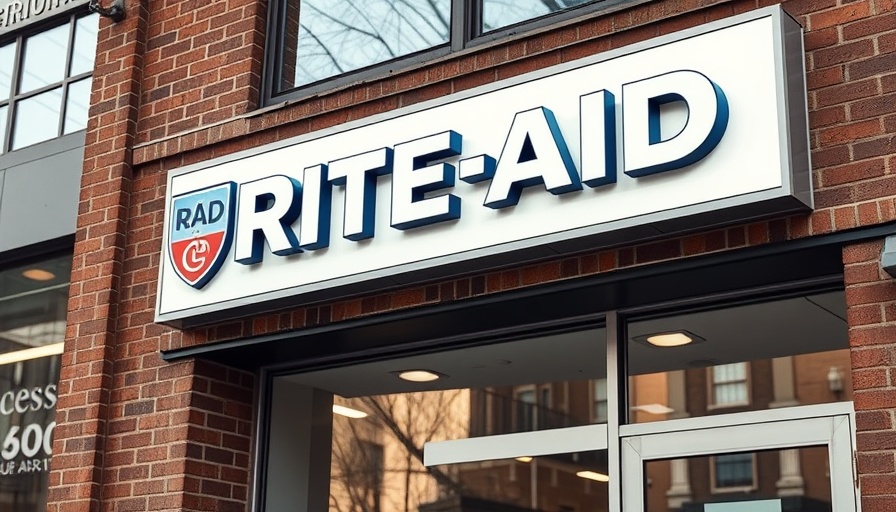
The Rise and Fall of Rite Aid: A Cautionary Tale
Rite Aid Corporation’s recent Chapter 11 bankruptcy filing marks a troubling chapter in the story of retail resilience. After emerging from a previous bankruptcy less than a year ago, Rite Aid now faces a perilous landscape exacerbated by more than $2 billion in debt and persistent economic challenges. Just one bankruptcy wasn't enough to secure a footing in a volatile market, exposing the fragile nature of many legacy retailers struggling to adapt.
Understanding the Influencing Factors
The factors leading to Rite Aid's downfall are multifaceted. Despite efforts to streamline operations and reduce debt, the persistent challenges of inflation and shifting consumer behaviors have clouded its recovery prospects. The company's CEO Matthew Schroeder highlighted the strain from tariffs and increased supplier expenses, which demonstrate the broader economic landscape affecting retail players. This situation calls for business owners, particularly those in the $2M–$10M revenue bracket, to cultivate adaptive strategies to navigate similarly turbulent waters.
Current Economic Environment: Retail in Crisis
The outcomes of Rite Aid’s choices can reflect a significant lesson for other companies. The harsh reality is that consumers are tightening their belts, leading to reduced foot traffic and lower revenue. A recent report showcased a 38% drop in venture capital for retail FinTechs, further illustrating investor hesitancy amid economic uncertainties. Such trends indicate a need for business leaders to pivot their operational models and embrace new funding methods in digital currencies or other fintech innovations to remain relevant.
Lessons to Consider for Business Stability
This dual bankruptcy situation signifies the importance of proactive measures in financial planning. As Rite Aid prepares for potential asset sales while cutting jobs, business owners should consider implementing more robust financial systems, exploring technologies that optimize cash flow and improve payment terms, and preparing flexible operational strategies to mitigate risks associated with sudden economic changes. Maintaining an adaptive mindset could very well be the differentiator between survival and closure in these times.
Future Predictions and Opportunities
If there’s any silver lining to Rite Aid's troubling situation, it’s a clarion call for innovation. As companies reassess their approaches, the integration of technology in operations—especially in logistics and digital payment systems—can offer a path forward, paving the way for a new era of retail that embraces e-commerce and innovative customer engagement strategies. This evolution underscores a critical trend: those who leverage technology effectively will likely outpace competitors who remain stagnant.
Final Thoughts: Take Action Now
As we watch Rite Aid's saga unfold, business leaders must reflect on their own operational infrastructures and become proactive about exploring new funding options while being attuned to economic shifts. With digital currencies gaining traction, there are significant opportunities awaiting those willing to adapt. Whether you are scaling your operations or seeking funding, now is the time to explore the trends shaping the future of retail and beyond.
 Add Row
Add Row  Add
Add 



Write A Comment